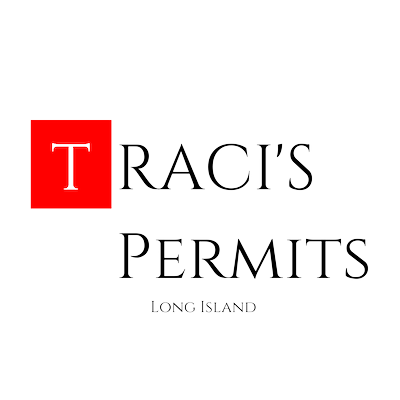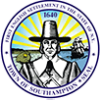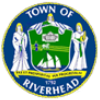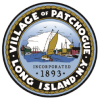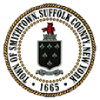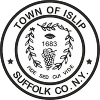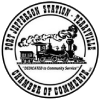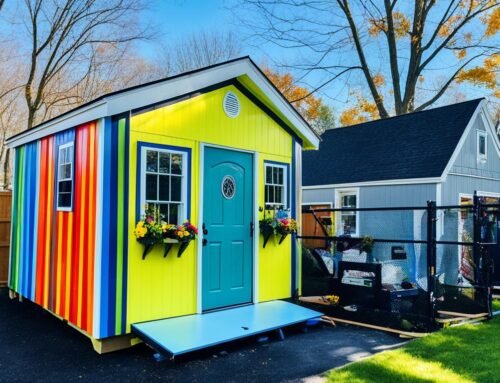Planning a construction project in Wainscott, Long Island? It’s crucial to understand the requirements for building permits, variances, radius maps, and certificates of occupancy in this area. Compliance with the town’s regulations is essential for a smooth and successful construction process.
The town of Wainscott follows strict guidelines outlined in the Use Table and Dimensional Table to ensure proper land use and building standards. From the size and purpose of accessory buildings to the construction of berms, fences, gates, and walls, there are specific regulations that must be adhered to.
To navigate through the complexities of Wainscott’s building and zoning regulations, it’s beneficial to seek professional assistance. TracisPermits.com is here to help you obtain the necessary building permits, variances, radius maps, and certificates of occupancy quickly and efficiently. Our team of experts understands the local regulations and will guide you through the process, ensuring compliance every step of the way.
Key Takeaways:
- Getting building permits and complying with zoning regulations is crucial for construction projects in Wainscott.
- Wainscott follows specific regulations for accessory buildings, berms, fences, gates, and walls.
- TracisPermits.com can assist you in obtaining building permits, variances, radius maps, and certificates of occupancy quickly.
- Understanding and following the regulations ensures a safe and compliant construction process.
- Professional guidance is essential to navigate through Wainscott’s building and zoning requirements.
Wainscott Zoning Regulations for Berms, Fences, Gates, and Walls
The town of Wainscott has specific zoning regulations in place for the construction of berms, fences, gates, and walls. These regulations aim to ensure that the construction and placement of these structures align with the town’s aesthetic, safety, and setback requirements.
Building permits are required for berms over four feet in height in the front yard area or over six feet in height in any location. Additionally, certain types of berms may require architectural and design review. It is important to note that berms should be constructed using approved materials and vegetation, and they should not interfere with drainage patterns or exceed height limitations.
The construction and maintenance of fences, gates, pillars, and walls in Wainscott are also subject to zoning regulations. Building permits and architectural and design review are necessary for structures over four feet in height in the front yard area or over six feet in height in any location. However, certain types of fences and gates that meet specific criteria may be exempt from the architectural and design review process.
These zoning regulations play a crucial role in maintaining the character, safety, and overall aesthetics of the town of Wainscott. By adhering to these regulations, residents and builders can ensure compliance and contribute to the harmonious development of the community.
Table: Summary of Wainscott Zoning Regulations for Berms, Fences, Gates, and Walls
| Structure | Height Limitations | Permit Requirement | Architectural & Design Review |
|---|---|---|---|
| Berms | Over 4ft in front yard or 6ft in any location | Yes | For certain types |
| Fences, Gates, Pillars, and Walls | Over 4ft in front yard or 6ft in any location | Yes | Yes, unless exempt |
Wainscott Zoning Regulations for Fences, Gates, Pillars, and Walls
The town of Wainscott has specific zoning regulations in place for fences, gates, pillars, and walls. These regulations ensure that construction projects adhere to safety standards, setback limitations, and fire codes. To comply with these regulations, building permits and architectural and design review are required for any fences, gates, pillars, or walls that exceed four feet in height in the front yard or six feet in height in any location. However, certain types of fences and gates may be exempt from the architectural and design review process if they meet specific criteria.
When constructing fences, gates, pillars, and walls in Wainscott, it is important to consider the materials used, maintenance requirements, and their impact on the overall aesthetics of the town. The regulations aim to maintain the character and safety of Wainscott by discouraging the presence of high berms, fences, and walls that can negatively affect setbacks and the town’s overall appeal. Additionally, the regulations outline conditions for compliance with fire codes, safety standards, and setback limitations to ensure the well-being of residents and the community.
The Wainscott zoning regulations also address the location and maintenance of fences, gates, pillars, and walls. It is essential to obtain the necessary building permits and follow the architectural and design review process to ensure that construction projects meet all requirements. By doing so, property owners, architects, engineers, and builders can contribute to the overall development and enhancement of Wainscott while maintaining the integrity of the town’s zoning regulations.
| Requirement | Front Yard (Over 4ft) | Any Location (Over 6ft) | Exemption Criteria |
|---|---|---|---|
| Building Permits | Required | Required | Specific types |
| Architectural and Design Review | Required | Required | Exempt if criteria met |
| Materials and Maintenance | – | – | – |
| Fire Codes and Safety Standards | Compliance required | Compliance required | – |
| Setback Limitations | Compliance required | Compliance required | – |
Building Permits and Site Plan Approval in Wainscott
Before embarking on any construction or conversion project in Wainscott, it is crucial to obtain the necessary building permits from the Wainscott Building Inspector. These permits are essential to ensure that the proposed work complies with all applicable building laws, ordinances, and regulations. Failure to obtain a building permit can lead to serious consequences, such as the nonissuance or revocation of a permit.
The process of obtaining a building permit in Wainscott involves submitting detailed information about the project, including a description of the proposed work, valuation, and plans and specifications. The Building Inspector carefully reviews these applications to ensure compliance with all relevant regulations. Site plan approval may also be required for certain projects, such as new construction or substantial improvements.
Working closely with the Building Inspector and following the proper procedures is essential for successful construction projects in Wainscott. It is advisable to consult with professionals who are familiar with the local regulations and can assist in navigating the building permit process smoothly.
Table: Steps to Obtain a Building Permit in Wainscott
| Step | Description |
|---|---|
| 1 | Submit a detailed application, including a description of the proposed work, valuation, and plans and specifications. |
| 2 | Wait for the Building Inspector to review the application and ensure compliance with building laws, ordinances, and regulations. |
| 3 | If required, obtain site plan approval for certain projects, such as new construction or substantial improvements. |
| 4 | Upon approval, receive the building permit from the Building Inspector. |
| 5 | Commence the construction or conversion project in compliance with the issued building permit. |
By following these steps and working closely with the Wainscott Building Inspector, property owners, architects, engineers, and builders can ensure that their construction projects adhere to all applicable regulations, contributing to the safe and responsible development of properties in Wainscott.
Duties and Powers of the Wainscott Building Inspector
The Wainscott Building Inspector plays a vital role in administering and enforcing building laws, ordinances, and regulations in the town of Wainscott. Their duties include reviewing building permit applications, conducting inspections, and issuing notices or orders to ensure safety compliance in construction projects. The Building Inspector also collaborates with other municipal departments, such as the Police, Fire, and Health Departments, to coordinate efforts in enforcing building codes and regulations.
The Building Inspector is responsible for maintaining records of all transactions and activities related to building permits, inspections, and enforcement. These records are important for transparency and accountability. They assist in tracking building activities and ensure compliance with regulations. Monthly reports summarizing the building department’s business and activities are submitted to the Town Board, providing a comprehensive overview of permits, fees, inspections, and appeals.
The Wainscott Building Inspector’s powers also extend to coordinating with other departments involved in construction and occupancy regulations. This collaborative approach ensures the proper review of building plans and compliance with fire codes and standards. By working together, the Building Inspector and other departments help maintain consistent and high-quality construction practices in Wainscott, promoting the safety and well-being of the community.
| Duties | Powers |
|---|---|
| Review building permit applications | Issue notices or orders for safety compliance |
| Conduct inspections | Coordinate with other municipal departments |
| Maintain records of building permits, inspections, and enforcement activities | Collaborate with the Police, Fire, and Health Departments |
| Submit monthly reports to the Town Board | Ensure compliance with fire codes and standards |
Records and Reports in Wainscott Building Department
The Wainscott Building Department maintains a comprehensive system of records and reports to ensure transparency and accountability in the building permit process. These records serve as a valuable resource for property owners, developers, and the general public who wish to access information regarding building permits, certificates, inspections, fees, and more. By maintaining accurate and accessible records, the Wainscott Building Department upholds its commitment to efficient and effective administration of construction regulations.
One of the key records maintained by the Wainscott Building Department is the building permit application database. This database contains detailed information about each permit application, including the name of the applicant, project description, valuation, and proposed plans and specifications. Access to this database allows developers and property owners to track the progress of their applications and ensure compliance with all necessary requirements.
In addition to the building permit application database, the Wainscott Building Department also keeps records of permits and certificates issued. These records provide an official record of approvals granted by the department and can be used as proof of compliance with building regulations. For example, property owners can use these records to demonstrate that they have obtained the necessary permits and certificates for their construction projects.
| Types of Records Maintained by the Wainscott Building Department | Examples of Information Included |
|---|---|
| Building permit application database | Name of the applicant, project description, valuation, plans and specifications |
| Permits and certificates issued | Permit or certificate number, date of issuance, project address |
| Inspection reports | Details of inspections conducted, findings, and recommendations |
| Notices or orders issued | Description of violation, actions required to achieve compliance |
The Wainscott Building Inspector also prepares monthly reports summarizing the activities and business conducted by the Building Department. These reports are submitted to the Town Board and provide a comprehensive overview of the department’s workload, including information on permits issued, fees collected, inspections conducted, appeals filed, and any pending litigation. The reports serve as a valuable tool for monitoring building activity in Wainscott and ensuring transparency in the administration of construction regulations.
In conclusion, the Wainscott Building Department maintains detailed records and reports to ensure the proper administration and enforcement of building regulations. These records provide property owners, developers, and the public with access to important information about building permits, certificates, inspections, and other aspects of the construction process. By maintaining accurate and accessible records, the Wainscott Building Department promotes transparency, accountability, and compliance with building regulations in the community.
Coordination with Other Departments in Wainscott Building Projects
In Wainscott, building projects require close coordination and cooperation between various departments to ensure compliance with building codes and regulations. The Wainscott Building Inspector collaborates with departments such as the Police, Fire, and Health Departments to streamline the approval process, conduct inspections, and prioritize safety in construction projects.
Building plans undergo review by the Town Fire Prevention Inspector to guarantee compliance with fire codes and standards. This thorough review ensures that construction projects not only meet structural requirements but also adhere to fire safety measures. By working together, these departments maintain consistent and high-quality construction practices, promoting the overall well-being of the Wainscott community.
Effective Collaboration for Smooth Construction
Cooperation and coordination play a crucial role in obtaining approvals, permits, and conducting inspections efficiently. By sharing information and expertise, the various departments involved in building projects can address any potential issues proactively and find solutions that guarantee compliance and safety.
Smooth collaboration between departments ensures that construction projects in Wainscott are not only visually appealing but also adhere to the highest safety standards. By working together, the departments involved can provide a streamlined and efficient process for property owners, architects, engineers, and builders.
Building codes in Wainscott are designed to protect the community, maintain the town’s character, and prioritize safety. The involvement of multiple departments ensures that these codes and regulations are enforced effectively, leading to successful construction projects that enhance property development on Long Island.
| Department | Role |
|---|---|
| Police Department | Review building plans for security considerations and address any potential concerns related to public safety. |
| Fire Department | Conduct inspections to ensure compliance with fire codes, verify the installation of fire safety equipment, and review evacuation plans. |
| Health Department | Assess the impact of construction projects on public health, review plumbing and sanitation systems, and ensure compliance with health regulations. |
Conclusion
If you are planning property development in Wainscott, it is crucial to navigate the process of obtaining building permits and complying with zoning and construction regulations. The Wainscott Building Department, led by the Building Inspector, plays a vital role in ensuring the safety and compliance of construction projects.
By familiarizing yourself with the regulations and following the proper procedures, you can streamline the property development process. Whether you need building permits, variances, radius maps, or certificates of occupancy, the Wainscott Building Department is there to assist you.
For fast and efficient service on Long Island, call TracisPermits.com at 631-492-0927. Their expert team can guide you through the process, helping you to obtain the necessary permits and navigate the construction regulations in Wainscott. Don’t let compliance issues delay your project – reach out to TracisPermits.com today!
FAQ
What are the regulations for accessory buildings in Wainscott?
Accessory buildings on residential properties in Wainscott must not exceed 600 square feet and should not contain plumbing facilities, except for affordable accessory apartments.
What are the regulations for berms in Wainscott?
Building permits are required for berms over four feet in height in the front yard area or over six feet in height in any location. Additional regulations pertain to grading plans, landscaping, and referrals to the Architectural Review Board.
What are the regulations for fences, gates, pillars, and walls in Wainscott?
Building permits and architectural and design review are required for fences, gates, pillars, or walls over four feet in height in the front yard area or over six feet in height in any location. Additional conditions and limitations apply to ensure compliance with fire codes, safety standards, and setback limitations.
What is the process for obtaining building permits in Wainscott?
Before commencing any construction or conversion project in Wainscott, building permits must be obtained from the Building Inspector. The application process involves submitting detailed information, including a description of the proposed work, valuation, and plans and specifications.
What is the role of the Wainscott Building Inspector?
The Wainscott Building Inspector is responsible for administering and enforcing building laws, ordinances, and regulations in the town. This includes reviewing building permit applications, conducting inspections, and issuing notices or orders for safety compliance.
Are the records of the Wainscott Building Department public?
Yes, the permanent records of the Wainscott Building Department, including building permit applications, permits and certificates issued, inspection reports, and notices or orders issued, are available for public inspection during business hours.
What departments does the Wainscott Building Inspector coordinate with?
The Wainscott Building Inspector works closely with other departments such as the Police, Fire, and Health Departments to ensure compliance with building codes and regulations, conduct inspections, and ensure the safety and integrity of construction projects.
